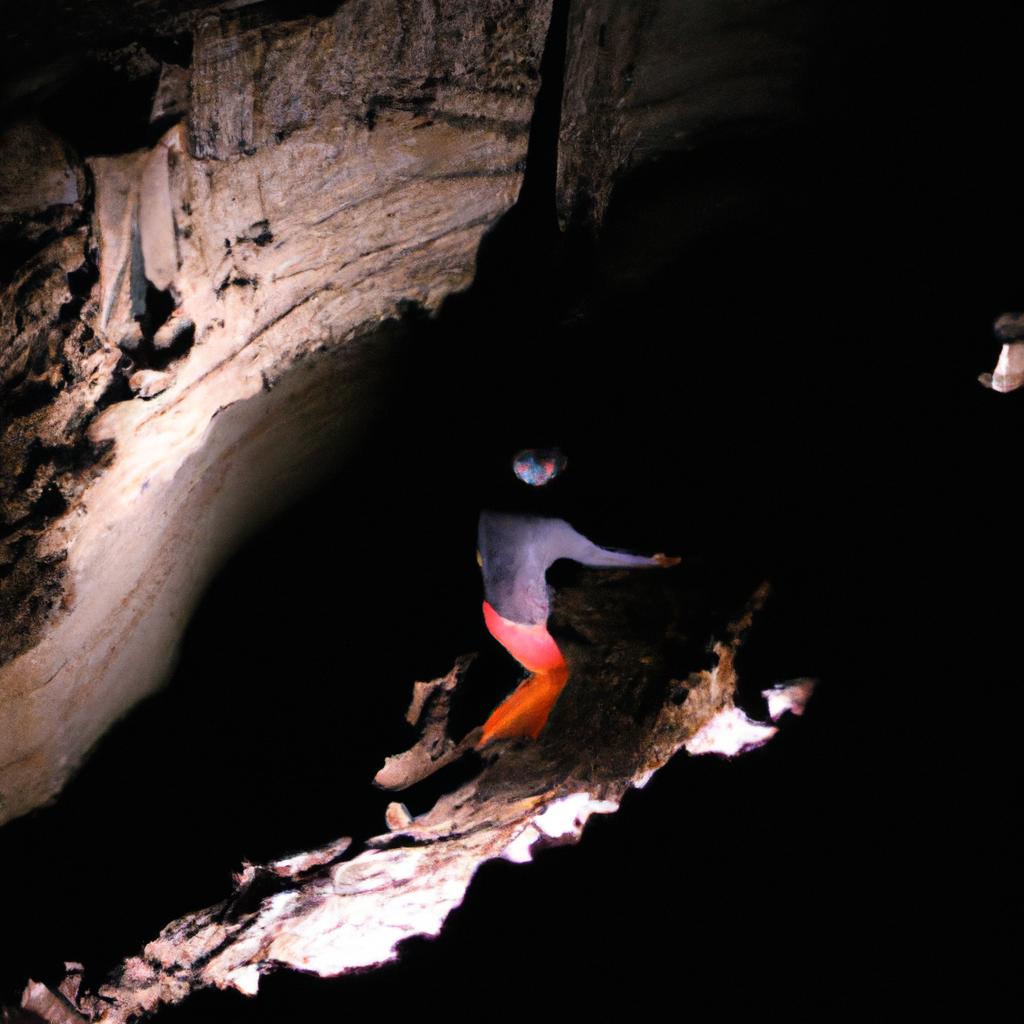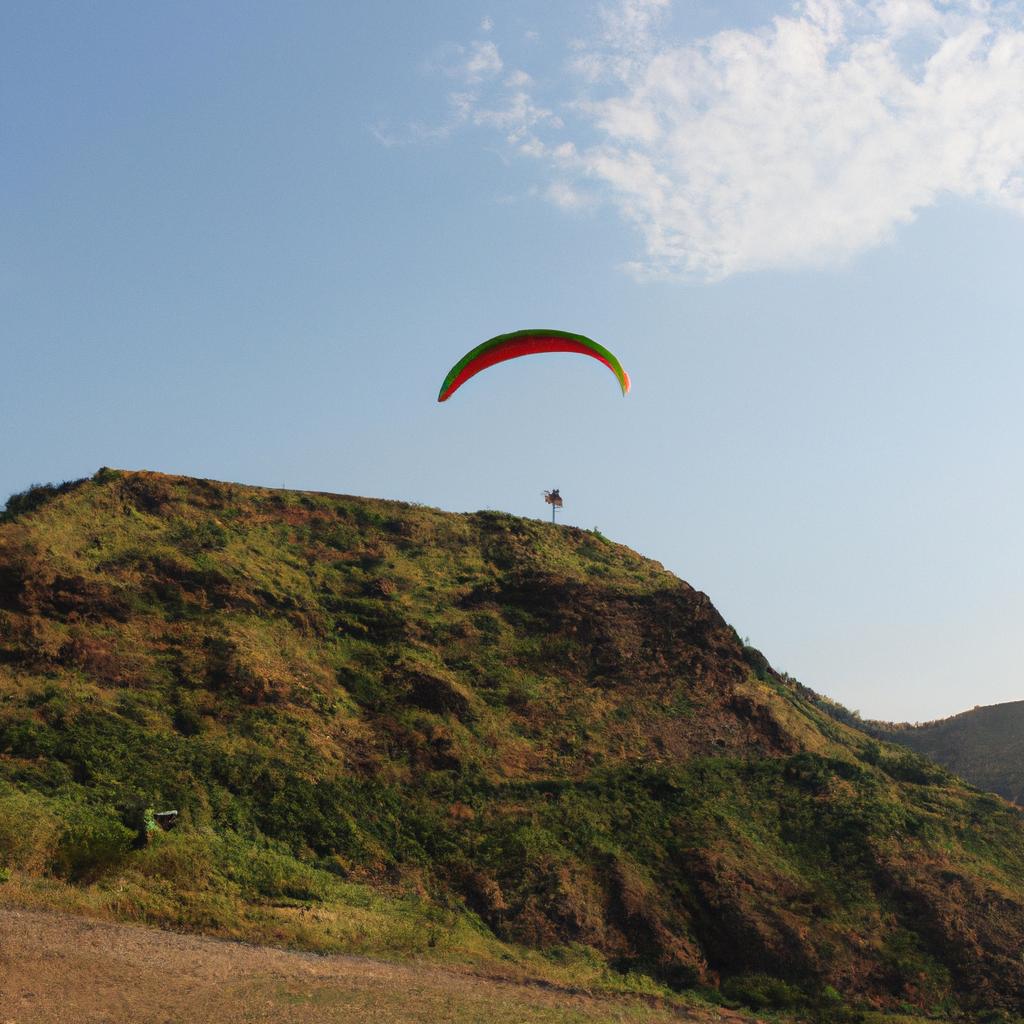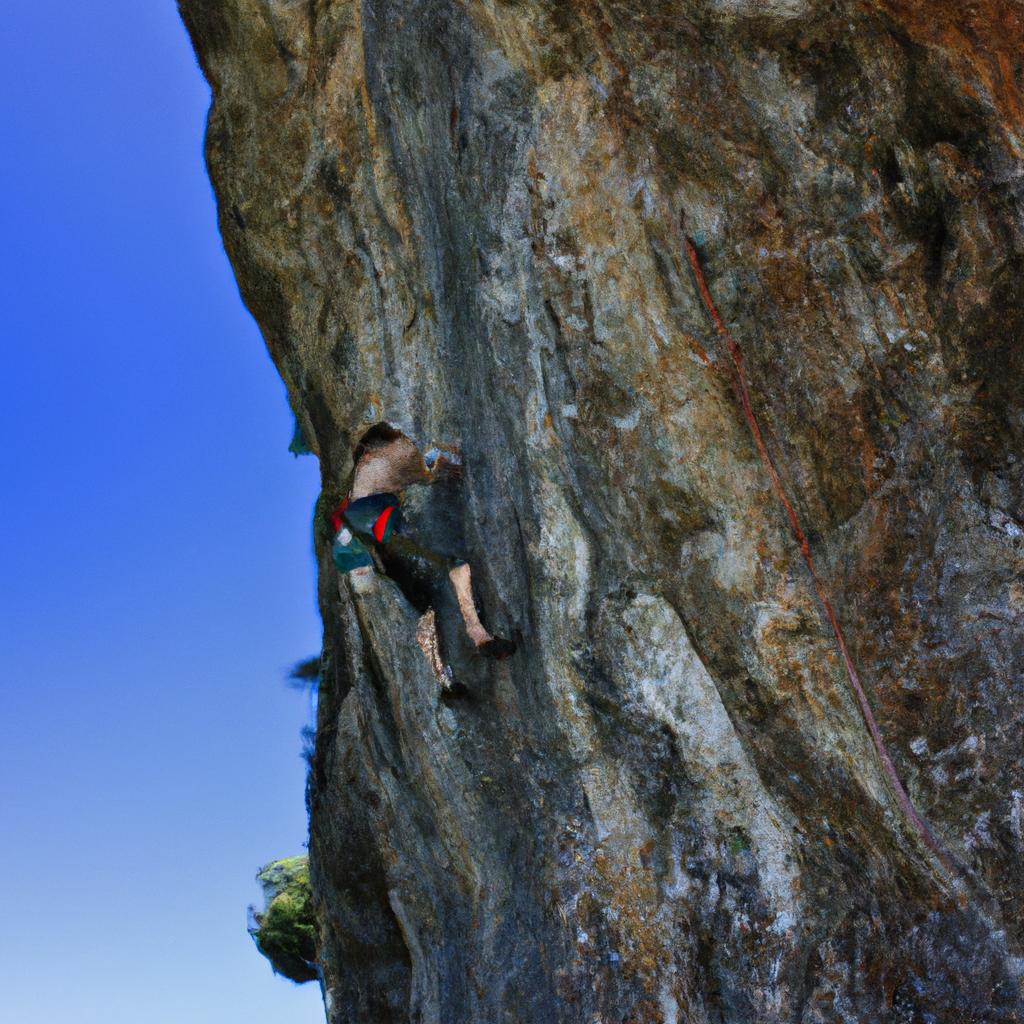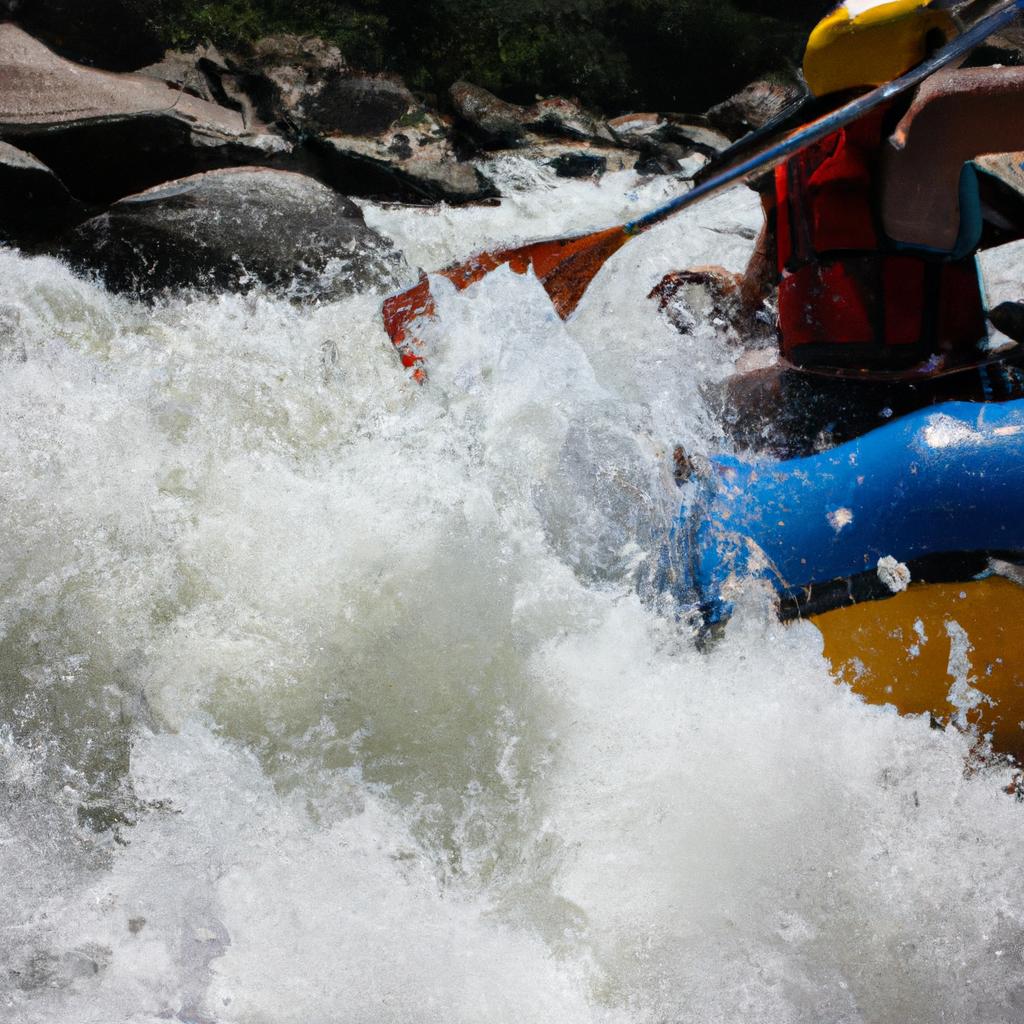The Depths: The Ultimate Guide to Caving in Adventure Destinations

The exploration of caves has long captivated the human imagination, offering a glimpse into the mysterious depths that lie beneath our feet. For those seeking an adrenaline-fueled adventure, caving provides an unparalleled experience in some of the world’s most breathtaking destinations. From spelunking through narrow passages to marveling at stunning stalactite formations, this ultimate guide aims to delve into the realm of cave exploration and provide valuable insights for both novices and seasoned adventurers alike.
Consider, for instance, a hypothetical scenario where a group of intrepid explorers embarks on a journey deep within the underground labyrinth of Mammoth Cave National Park in Kentucky, USA. Here lies the longest known cave system in the world, spanning over 400 miles of intricate passageways. As they navigate through darkness illuminated only by their headlamps, these daring individuals encounter awe-inspiring geological wonders such as colossal chambers and delicate mineral formations. Such encounters exemplify the allure of caving – an opportunity to witness nature’s hidden beauty firsthand while testing one’s physical and mental limits.
Beyond its inherent fascination, caving also offers opportunities for scientific discovery and conservation efforts. By studying cave ecosystems and their unique inhabitants, researchers gain invaluable insight into biodiversity and ecological processes often unseen by surface inhabitants. Cave ecosystems, also known as subterranean ecosystems, are home to a diverse array of species that have adapted to the unique conditions found underground. These species often exhibit specialized traits and behaviors that allow them to survive in the darkness, with limited resources and extreme temperature fluctuations.
Studying cave ecosystems helps scientists understand how life can thrive in seemingly inhospitable environments and provides valuable information for conservation efforts. Many cave-dwelling organisms are highly sensitive to environmental changes and serve as indicators of ecosystem health. By monitoring these populations and studying their interactions with the surrounding environment, researchers can gather data that informs conservation strategies aimed at preserving these fragile habitats.
Conservation efforts in caves not only focus on protecting biodiversity but also involve managing human impact on these delicate systems. Caving organizations and park authorities work together to establish guidelines and regulations for responsible exploration, ensuring that visitors respect the fragile nature of caves while still being able to enjoy their beauty. This includes practices such as minimizing disturbance to cave formations, avoiding introduction of foreign substances or organisms, and adhering to designated paths to prevent damage.
In addition to scientific research and conservation, caving also presents opportunities for educational programs and recreational activities. Many parks and organizations offer guided tours led by experienced cavers who provide insights into cave geology, history, and ecology. These tours allow individuals without extensive caving experience to safely explore caves while learning about their significance.
Overall, caving offers a unique blend of adventure, scientific discovery, conservation efforts, and educational experiences. Whether it’s venturing into the depths of Mammoth Cave National Park or exploring lesser-known caves around the world, the exploration of caves continues to captivate our imagination while providing valuable insights into Earth’s hidden wonders.
Preparing for Caving Exploration
Imagine a group of experienced cavers embarking on their next adventure in the vast underground world. Before they set foot into the mysterious depths, meticulous preparation is crucial to ensure their safety and enhance their overall experience. This section will guide you through the essential steps in preparing for caving exploration.
To illustrate the importance of proper preparation, let us delve into a hypothetical scenario. In this case, a team of spelunkers plans to explore an uncharted cave system deep within a remote region. Without adequate preparation, they run the risk of encountering unforeseen dangers such as unstable rock formations or sudden flooding. By following thorough pre-cave protocols, however, these risks can be minimized and the expedition can proceed smoothly.
Before venturing into any cave, there are several key aspects that must be considered:
Safety Measures
- Ensure all members have completed first aid training.
- Conduct a comprehensive risk assessment prior to entering any new cave.
- Establish communication procedures with surface teams at regular intervals.
- Develop emergency response plans tailored to each specific cave environment.
Environmental Awareness
| Factors | Considerations |
|---|---|
| Air Quality | Monitor oxygen levels regularly |
| Temperature | Prepare appropriate clothing |
| Humidity | Protect equipment from moisture |
Psychological Preparedness
- Stay calm in confined spaces.
- Maintain focus and concentration during challenging situations.
- Build trust among team members through effective communication and cooperation.
- Develop problem-solving skills to handle unexpected obstacles.
By adhering to these preparatory measures, cavers increase their chances of successfully navigating intricate cave systems while safeguarding their well-being. The subsequent section will discuss the necessary equipment required for engaging in safe and enjoyable expeditions beneath the earth’s surface.
Transitioning seamlessly into our discussion about “Essential Equipment for Caving,” it is vital to equip oneself with the proper tools in order to embark on a successful caving expedition.
Essential Equipment for Caving
Building upon the knowledge gained in preparing for caving exploration, it is now essential to understand the equipment required for a safe and successful caving experience. By ensuring you have the necessary tools at your disposal, you can navigate through intricate cave systems with confidence. Let’s delve into the world of essential equipment for caving.
To illustrate the importance of proper gear selection, consider this hypothetical scenario: Sarah, an experienced spelunker, embarks on a challenging expedition deep within an unexplored cave network. Equipped with her trusty helmet-mounted headlamp and sturdy harness, she confidently maneuvers through narrow passageways and over treacherous rock formations. The right equipment not only enhances safety but also enables adventurers like Sarah to fully embrace the thrill and wonder of underground exploration.
When it comes to selecting your caving gear, there are several key items that should be part of every spelunker’s arsenal:
- Helmet: A durable helmet provides protection against accidental falls or debris dislodged from above.
- Headlamp: Essential for illuminating dark caverns, a reliable headlamp allows for hands-free navigation while exploring tight spaces.
- Harness: A well-fitted harness ensures stability and support when traversing vertical sections or negotiating difficult terrain.
- Footwear: Sturdy boots with non-slip soles provide grip on slippery surfaces and protect feet from sharp rocks or uneven ground.
In addition to these essentials, having a comprehensive understanding of each piece of equipment is crucial. To aid your decision-making process, refer to the table below which outlines important features and considerations when choosing your gear:
| Equipment | Features | Considerations |
|---|---|---|
| Helmet | Lightweight | Adjustable chin strap |
| Headlamp | Long battery life | Multiple light settings |
| Harness | Comfortable fit | Strong and secure buckles |
| Footwear | Waterproof | Ankle support |
By investing in high-quality equipment that meets your specific needs, you can minimize risks associated with caving exploration. Remember to thoroughly research and test your gear prior to embarking on any underground adventure.
With a solid understanding of the essential equipment required for caving, it is now time to explore the crucial safety measures necessary to ensure a successful expedition into the depths.
Safety Measures in Caving
Imagine this scenario: You find yourself deep inside a limestone cave, surrounded by stunning stalactites and intricate rock formations. The thrill of exploring unknown depths is palpable, but it’s crucial to remember that caving can be an unpredictable and potentially dangerous activity. In order to fully appreciate the wonders hidden beneath the earth’s surface, it is essential to follow safety measures that prioritize your well-being.
Safety Measures in Caving:
-
Plan Ahead:
- Research and choose caves suitable for your skill level.
- Inform someone about your plans, specifying the estimated duration of your exploration.
- Familiarize yourself with potential hazards and emergency procedures.
-
Dress Appropriately:
- Wear sturdy footwear with good traction.
- Use protective clothing like coveralls or overalls to shield against scratches and abrasions.
- Don’t forget a helmet equipped with a reliable headlamp for visibility in dark areas.
-
Stay Hydrated and Energized:
- Carry sufficient water and high-energy snacks to sustain you during prolonged expeditions.
- Take regular breaks to rest and refuel, especially when tackling physically demanding passages.
-
Never Explore Alone:
- Always venture into caves accompanied by experienced cavers or certified guides.
- Maintain visual contact with your companions at all times to ensure everyone’s safety.
By adhering to these safety measures, you significantly reduce the risk associated with caving expeditions while maximizing your enjoyment of this extraordinary experience. Remember, exploring different types of caves offers unique challenges and rewards; understanding how various cave systems differ will enhance both your knowledge and appreciation of subterranean wonders.
Transitioning seamlessly into our next section on “Exploring Different Types of Caves,” we delve further into distinguishing features found within diverse cave environments. Prepare yourself for an enticing journey through fascinating caverns created by nature’s mysterious forces.
Exploring Different Types of Caves
Transitioning from the previous section on safety measures in caving, it is essential to understand the various types of caves that await adventurous explorers. By delving into different cave formations and features, individuals can appreciate the awe-inspiring wonders hidden beneath the Earth’s surface. One fascinating example of a unique type of cave is the ice cave found within Vatnajökull National Park in Iceland.
Ice caves are formed when water seeps through cracks in glaciers during warmer months and freezes during colder seasons, creating mesmerizing crystal-like structures inside. These ethereal caverns offer an otherworldly experience for those who venture deep beneath the glacial surface. However, exploring such natural marvels requires utmost caution due to potential hazards like unstable ice ceilings or sudden changes in temperature.
To further grasp the diversity of caves around the world, let us explore some distinct types:
- Lava Tubes: Formed by flowing lava during volcanic eruptions, these tunnels create subterranean passages often characterized by smooth rock walls and floors.
- Sea Caves: Carved out by oceanic erosion along coastal cliffs, sea caves showcase stunning geological formations shaped by relentless waves over time.
- Solution Caves: Dissolution of soluble rocks like limestone or gypsum leads to solution caves characterized by intricate networks of interconnected chambers.
- Wind Caves: Resulting from wind-driven erosion on softer rock layers, wind caves exhibit distinctive sculptural patterns caused by abrasive particles carried by gusts of air.
Table: Unique Cave Types
| Type | Formation Process |
|---|---|
| Ice Caves | Water freezing within glacier cracks |
| Lava Tubes | Flowing lava solidifying |
| Sea Caves | Oceanic erosion |
| Solution Caves | Dissolution of soluble rocks |
| Wind Caves | Wind-driven erosion |
As adventurers delve deeper into their exploration journey, understanding these cave types not only enhances their knowledge but also fosters a deeper appreciation for the Earth’s geological wonders. With safety measures in mind, individuals can embark on thrilling caving adventures while immersing themselves in the breathtaking beauty and mystery that lie beneath the surface.
Now, let us dive into another captivating aspect of caves – their extraordinary formations and features. Discover how these natural marvels captivate explorers with stunning sights and intricate details as we explore Cave Formations and Features.
Cave Formations and Features
From the intricate passageways of limestone caves to the grandeur of ice caves, exploring different types of caves opens up a world of awe-inspiring wonders. Each cave possesses its own unique characteristics and formations that captivate adventurers and scientists alike. In this section, we will delve into some common types of caves found in adventure destinations, shedding light on their distinctive features and highlighting their significance.
One fascinating example is the Carlsbad Caverns in New Mexico, USA. This limestone cave system boasts an extensive network of chambers and passages adorned with stunning stalactites and stalagmites. The Big Room, one of the largest underground chambers in North America, showcases a breathtaking display of these formations. As visitors venture through the winding paths within Carlsbad Caverns, they are transported into a mesmerizing subterranean realm.
When it comes to classifying caves based on their formation process or geological origin, several categories emerge:
- Solutional Caves: These form primarily through chemical weathering caused by acidic groundwater dissolving soluble rock such as limestone or gypsum.
- Lava Tubes: Formed during volcanic eruptions when molten lava flows rapidly and develops a solid crust while the interior remains hollow.
- Sea Caves: Created by wave action eroding cliffs along coastlines over long periods of time.
- Glacier Caves: Found inside glaciers where meltwater carves out tunnels and crevasses within the icy mass.
To further illustrate the diversity among cave types, consider the following table showcasing notable examples from around the world:
| Cave Type | Location | Notable Features |
|---|---|---|
| Mammoth Cave | Kentucky, USA | World’s longest known cave system |
| Eisriesenwelt | Werfen, Austria | Ice formations illuminated by colored lights |
| Waitomo Glowworm | North Island, New Zealand | Bioluminescent glowworms on cave ceilings |
| Reed Flute | Guilin, China | Colorful stalactites and illuminated with colored lights |
As we explore the various types of caves and their unique features, it becomes evident that these underground wonders possess an unparalleled allure. From the delicate formations shaped over thousands of years to the hidden ecosystems harboring unique species, each cave offers a glimpse into Earth’s geological history and natural beauty.
Transitioning into the subsequent section about “Challenges and Rewards of Caving,” adventurers must navigate through not only physical obstacles but also personal triumphs when venturing into the depths of these extraordinary environments. By encountering challenges head-on, cavers can unlock remarkable rewards that lie in wait within the mysterious world beneath our feet.
Challenges and Rewards of Caving
Cave Formations and Features play a crucial role in creating the awe-inspiring beauty that captivates cavers around the world. Exploring these underground wonders reveals a hidden world of geological phenomena, each with its unique characteristics and significance. To illustrate this, let us consider the case study of Mammoth Cave National Park in Kentucky, USA. This vast cave system showcases an extraordinary array of formations and features, making it a prime destination for adventurous spelunkers.
One notable formation found in Mammoth Cave is the stalactite-stalagmite pair. These icicle-like structures are formed when mineral-rich water drips from the cave ceiling (stalactites) and accumulates on the cave floor (stalagmites). Over time, they grow towards each other until they eventually merge into one cohesive column. In addition to their visual appeal, stalactites and stalagmites provide valuable insights into past climatic conditions through chemical analysis.
Another remarkable feature encountered in caves is known as flowstone. Flowstone refers to sheets or curtains of calcium carbonate deposits that form when water carrying dissolved minerals seeps down walls or over ledges. The slow deposition process creates stunning patterns resembling frozen waterfalls or ribbons cascading along cave surfaces. Besides their aesthetic value, flowstones serve as records of ancient hydrological cycles and can contribute to our understanding of climate change throughout history.
As we delve deeper into the exploration of caves, we encounter intricate networks of passages interconnecting various chambers. Cavers often stumble upon domes – large cavernous spaces characterized by their impressive size and height – which can evoke feelings of awe and insignificance amidst nature’s grandeur. Additionally, narrow squeezes challenge adventurers physically while also offering glimpses into how erosion shapes cave systems over millions of years.
To further appreciate the allure of Cave Formations and Features, consider the following emotional response-inducing bullet points:
- Wonder: Witnessing the intricate beauty and delicate formations found underground can evoke a sense of awe and wonder.
- Curiosity: Exploring hidden worlds that few have seen sparks curiosity about the Earth’s geological history and our place within it.
- Adventure: The physical challenges faced while navigating through cave systems create an adrenaline-fueled adventure for thrill-seekers.
- Connection: Developing a connection with nature by experiencing firsthand the raw power and timelessness of geological processes.
To complement these bullet points, we present a table highlighting some notable Cave Formations and Features, along with their unique characteristics:
| Formation/Feature | Description |
|---|---|
| Stalactites | Icicle-like structures hanging from cave ceilings, formed by mineral-rich water drippings. |
| Stalagmites | Cone-shaped formations on cave floors resulting from accumulated calcium carbonate deposits. |
| Flowstone | Calcium carbonate deposits resembling sheets or curtains, often forming beautiful patterns. |
| Cavernous Chambers | Large open spaces within caves, sometimes reaching impressive heights like domes. |
With its diverse array of formations and features exemplified by Mammoth Cave National Park, caving enthusiasts are afforded captivating insights into both past geological processes and the wonders of nature in real-time. Embracing the emotional responses sparked by caves’ splendor serves to enhance one’s appreciation for this thrilling adventure activity, drawing individuals closer to understanding the fascinating world beneath our feet.






